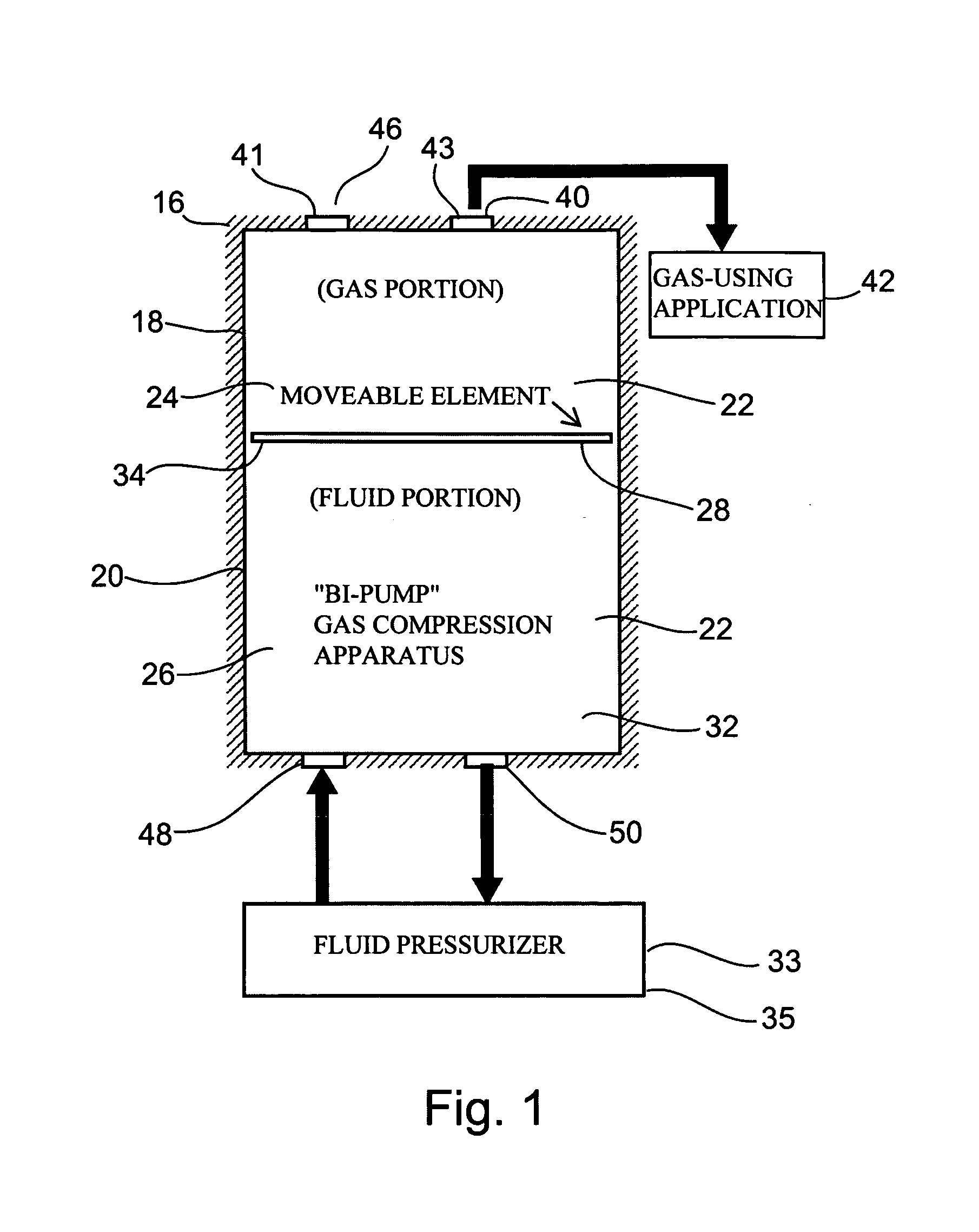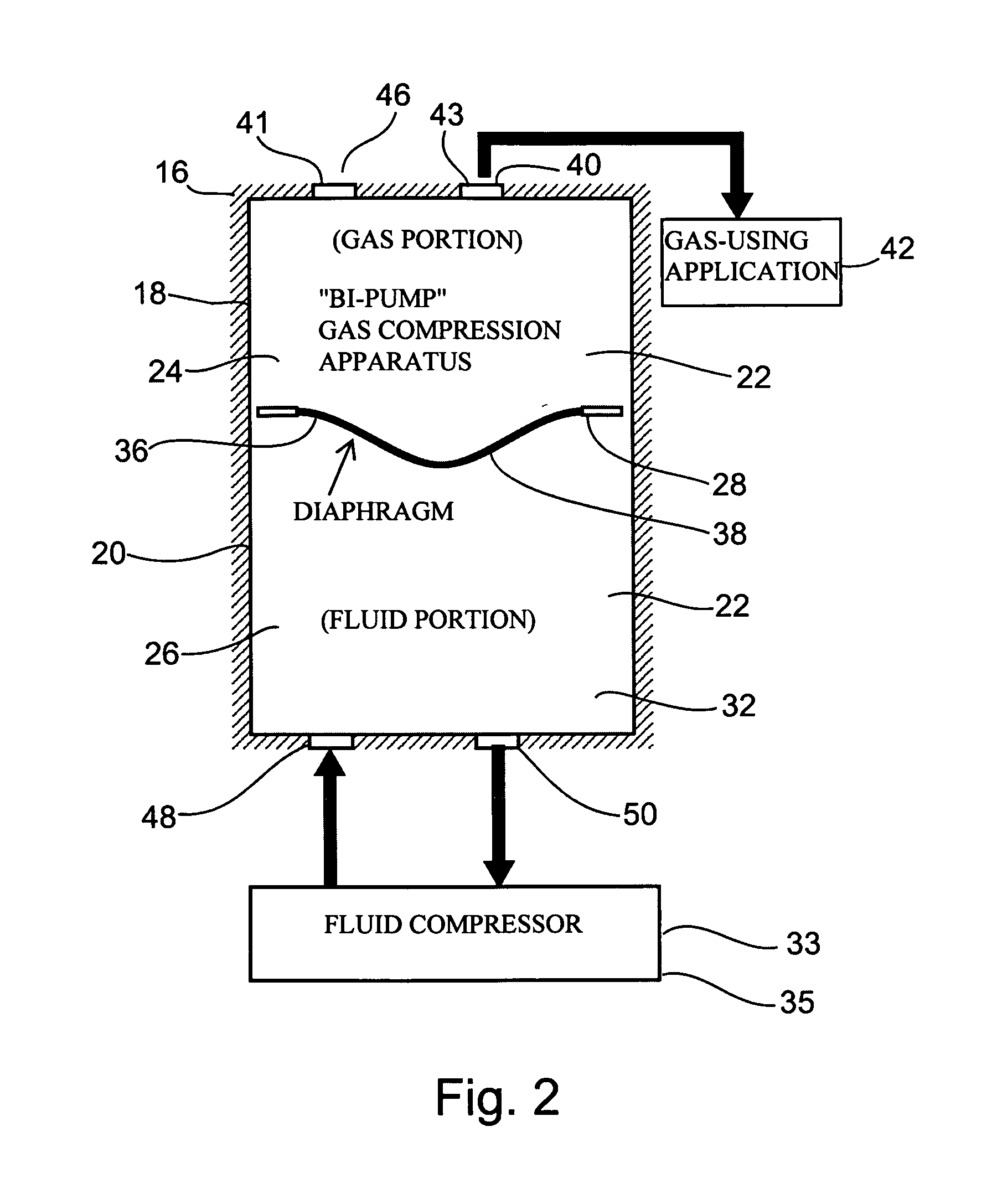Apparatus and method for compressing a gas, and cryosurgery system and method utilizing same
a gas compression and apparatus technology, applied in the field of apparatus and apparatus for compressing and/or recompressing gas, can solve the problems of compromising the purity of compressed gas, limiting and disadvantages of these prior art methods, and affecting the operation of surgical instruments for cooling,
- Summary
- Abstract
- Description
- Claims
- Application Information
AI Technical Summary
Benefits of technology
Problems solved by technology
Method used
Image
Examples
Embodiment Construction
[0076]The present invention is of apparatus and method for compressing and / or re-compressing gas which can be used for in situ gas compression as a method of supplying compressed gas to a compressed gas utilizing application, such as a cryoablation apparatus. More specifically, the present invention can be used to compress a gas for use in a compressed gas utilizing application. The present invention can further be used to raise the pressure of a compressed gas, to thereby supply high pressure gas to a compressed gas utilizing application using medium pressure gas sources. It can further be used to supply compressed gas at a constant selected pressure to a compressed gas utilizing application. It can further be used to supply compressed gas to a compressed gas utilizing application, while utilizing all or substantially most of the gas supplied in conventional gas cylinders or similar containers.
[0077]In one particular and presently preferred embodiment, the present invention is used...
PUM
 Login to View More
Login to View More Abstract
Description
Claims
Application Information
 Login to View More
Login to View More - R&D Engineer
- R&D Manager
- IP Professional
- Industry Leading Data Capabilities
- Powerful AI technology
- Patent DNA Extraction
Browse by: Latest US Patents, China's latest patents, Technical Efficacy Thesaurus, Application Domain, Technology Topic, Popular Technical Reports.
© 2024 PatSnap. All rights reserved.Legal|Privacy policy|Modern Slavery Act Transparency Statement|Sitemap|About US| Contact US: help@patsnap.com










